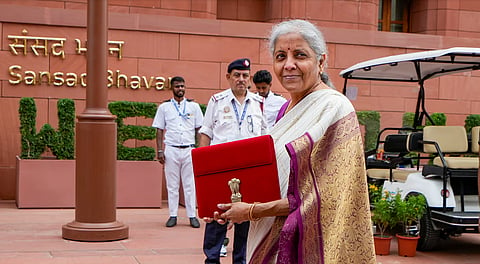

While India's budget-making seems like it is shrouded in secrecy, here is an overview of the backend processes that determine the direction and its overall messaging.
Preparation
The finance ministry sets the ball rolling by seeking inputs from various sources, such as ministries, departments, industry bodies, and the public. Each ministry submits its expenditure proposals.
The department coordinates the entire process of budget-making, which begins with a broad outline from the Prime Minister's Office (PMO).
Along with the budget speech in the Parliament, detailed documents are presented to provide a comprehensive overview of the government's financial plans and allocations.
The documents include the Annual Financial Statement, which shows the government's estimated receipts and expenditure for the upcoming financial year.
The receipts and expenditures are shown in three parts: the Consolidated Fund, the Contingency Fund, and the Public Account.
The most important document is the Finance Bill that outlines changes in tax rates, provisions and rules. Another document, the Memorandum Explaining the Provisions in the Finance Bill, provides a detailed explanation of the proposed amendments in tax laws, along with the rationale.
As for the Expenditure Budget, it describes the spending proposals under various heads like salaries, infrastructure and social welfare schemes.
After inputs review and pre-budget consultations, draft amendments follow. These drafts undergo vetting by the Ministry of Law and Justice before they are finalised for inclusion in the Finance Bill.
Impact analysis
Detailed discussions on the impact of the proposed changes and revenue implications are held with key officials. The final approval, as per sources, comes from the Prime Minister's Office (PMO).
